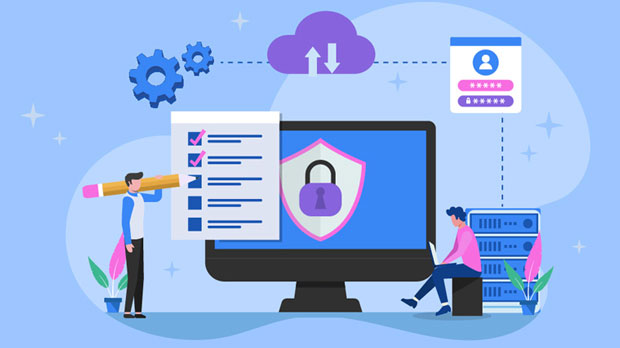Obtaining and configuring a free socks5 proxy IP can be an essential tool for users seeking enhanced privacy, secure browsing, or the ability to access content unavailable in their region. socks5 proxies offer faster speeds and better support for various protocols compared to other proxy types, making them a popular choice. However, finding a reliable, free socks5 proxy can be challenging due to issues with speed, reliability, and security. In this article, we’ll discuss how to quickly acquire and configure free SOCKS5 proxy IPs while navigating the challenges involved. Understanding SOCKS5 ProxyBefore diving into how to obtain and configure a SOCKS5 proxy, it’s important to understand what it is. SOCKS5 is a protocol that enables a client to connect to the internet through a proxy server, which acts as an intermediary. Unlike regular HTTP or HTTPS proxies, SOCKS5 can handle all types of internet traffic, including P2P connections, and supports both IPv4 and IPv6. Its advantages include superior performance in bypassing censorship and maintaining anonymity without altering data or causing speed degradation.The reason SOCKS5 proxies are preferred over other types lies in their versatility and flexibility. For example, they do not interfere with the types of internet traffic, which makes them suitable for different applications such as torrenting, online gaming, or simply browsing. SOCKS5 proxies also provide an extra layer of security by masking the user’s real IP address, preventing websites from tracking personal information.How to Obtain Free SOCKS5 Proxy IPFinding a free SOCKS5 proxy can be a daunting task, as many free proxy services come with inherent risks, such as limited uptime, slow speeds, and questionable privacy practices. However, if you know where to look and how to choose wisely, it is possible to find usable SOCKS5 proxy IPs. Here are some common methods to obtain free SOCKS5 proxy IPs:1. Public Proxy Lists One of the quickest ways to find free SOCKS5 proxies is through public proxy lists. These lists compile proxies from various sources and update frequently. You can find these lists through search engines or proxy-specific forums. However, it’s important to keep in mind that the reliability of these lists varies, and proxies listed there might not remain functional for long.2. Online Forums and Communities Various online forums and communities are dedicated to sharing proxy-related information. These forums often have users posting fresh SOCKS5 proxies regularly. By subscribing to these forums, you can stay updated on the latest free SOCKS5 proxies shared by other users. It is, however, advisable to verify the IPs before using them.3. Proxy Scraping Tools Proxy scraping tools automate the process of collecting free proxies from multiple sources. These tools scan websites that provide proxy lists and gather the IPs in real time. Using scraping tools can save time and effort in finding proxies manually. However, many free proxies might be unreliable or already blocked, so regular updates are necessary.4. Free Proxy Websites Certain websites specialize in offering free proxy IP addresses for various protocols, including SOCKS5. These websites are typically updated daily with a list of proxies, and users can filter the results based on specific requirements like region or speed.5. Open-Source Proxy Projects There are open-source projects dedicated to providing free proxy IPs, including SOCKS5. These projects are often maintained by communities that regularly test the proxies to ensure their functionality. These sources can offer good quality SOCKS5 proxies but may require more technical knowledge to use effectively.Challenges in Using Free SOCKS5 ProxiesWhile free SOCKS5 proxies offer several benefits, such as being cost-effective, they come with their own set of challenges. These challenges include:1. Unreliable Performance Free proxies tend to be slower and less stable than paid alternatives. Because these proxies are publicly shared, they can be overloaded by numerous users at once, leading to slower internet speeds or connection failures.2. Security Risks Free proxies may not offer adequate encryption or data protection. Some free proxy providers may log user activity, compromising privacy and exposing sensitive data. Therefore, users should exercise caution when using free proxies for tasks involving sensitive information.3. Limited Access Free SOCKS5 proxies may sometimes be restricted to certain geographic regions or IP addresses, limiting access to certain websites or services. Furthermore, websites and services may block free proxies more quickly, rendering them unusable.4. Frequent Downtime Publicly available proxies are more prone to downtime, especially those that are free. The absence of a service guarantee means that free proxies can go offline without notice, leaving users unable to access the internet or complete tasks until they find a new proxy.How to Configure SOCKS5 ProxyOnce you have found a reliable free SOCKS5 proxy IP, the next step is configuring it on your device. Below are general steps for configuring a SOCKS5 proxy for different devices and platforms:1. Configuring SOCKS5 Proxy on Windows - Open the "Control Panel" and go to "Network and Sharing Center." - Click on "Internet Options," then navigate to the "Connections" tab. - Click on "LAN Settings" and check the box for "Use a proxy server for your LAN." - Enter the SOCKS5 proxy IP and port number in the relevant fields. - Save the settings and exit.2. Configuring SOCKS5 Proxy on Mac - Open "System Preferences" and go to "Network." - Select the network connection you want to configure and click "Advanced." - Navigate to the "Proxies" tab, then check the box next to "SOCKS Proxy." - Enter the SOCKS5 proxy IP and port number. - Click "OK" to save the settings.3. Configuring SOCKS5 Proxy on Browsers (e.g., Chrome or Firefox) - For Google Chrome, you can use an extension like "Proxy SwitchyOmega" to set up SOCKS5 proxy configurations. - In Firefox, go to "Options" > "General" > "Network Settings," and select "Manual proxy configuration." Enter the SOCKS5 IP and port.4. Configuring SOCKS5 Proxy on Mobile Devices - On iOS and Android, you can configure a SOCKS5 proxy by going into the Wi-Fi settings of your device, selecting the network, and entering the SOCKS5 proxy IP and port under the "Proxy" settings.Tips for Maximizing the Use of Free SOCKS5 ProxiesTo get the most out of free SOCKS5 proxies and minimize the downsides, consider these practical tips:1. Rotate Proxies Regularly Since free proxies tend to have short lifespans, rotating proxies regularly can help maintain a stable and functional internet connection. Use a proxy rotation tool to automate this process.2. Use Proxy Management Software Proxy management tools help users manage multiple proxy IPs effectively. These tools can automatically switch proxies, ensuring you are using the best available one at all times.3. Test Proxies Before Use Always test a SOCKS5 proxy before fully relying on it. You can test the connection by trying to access a website or checking the proxy speed using a speed test service.4. Limit Sensitive Activities Avoid using free SOCKS5 proxies for sensitive activities like banking or accessing personal information. Free proxies can be insecure, and you should use them primarily for non-sensitive tasks such as browsing or streaming.ConclusionIn conclusion, free SOCKS5 proxies can be a valuable tool for users seeking privacy and unrestricted internet access. However, it’s important to be aware of the challenges associated with free proxies, such as reliability, speed, and security risks. By carefully selecting your sources, configuring your proxy properly, and implementing strategies to mitigate risks, you can make the most of free SOCKS5 proxies while maintaining a safe and efficient online experience.
Jan 07, 2025
![arrow]()



























































